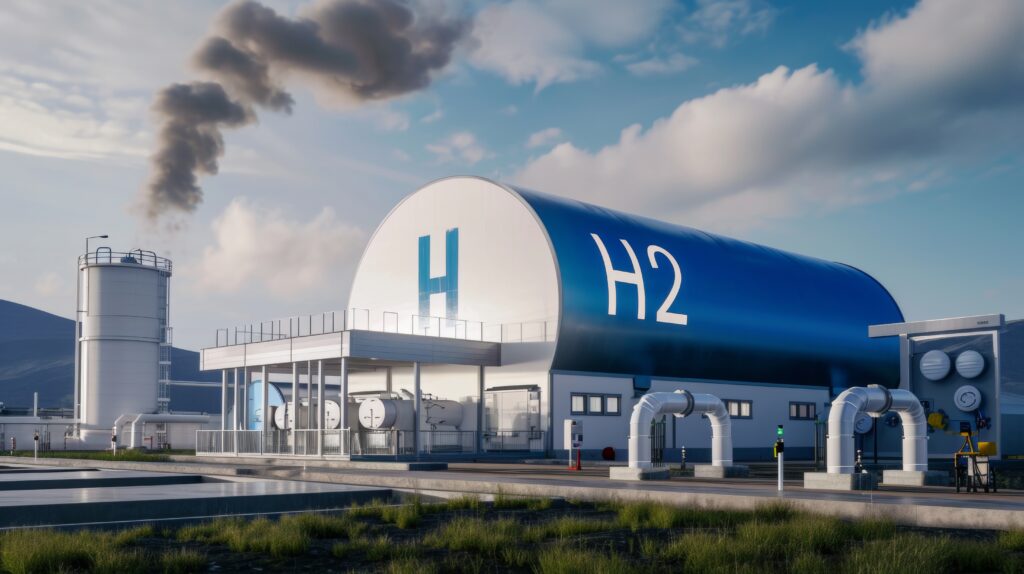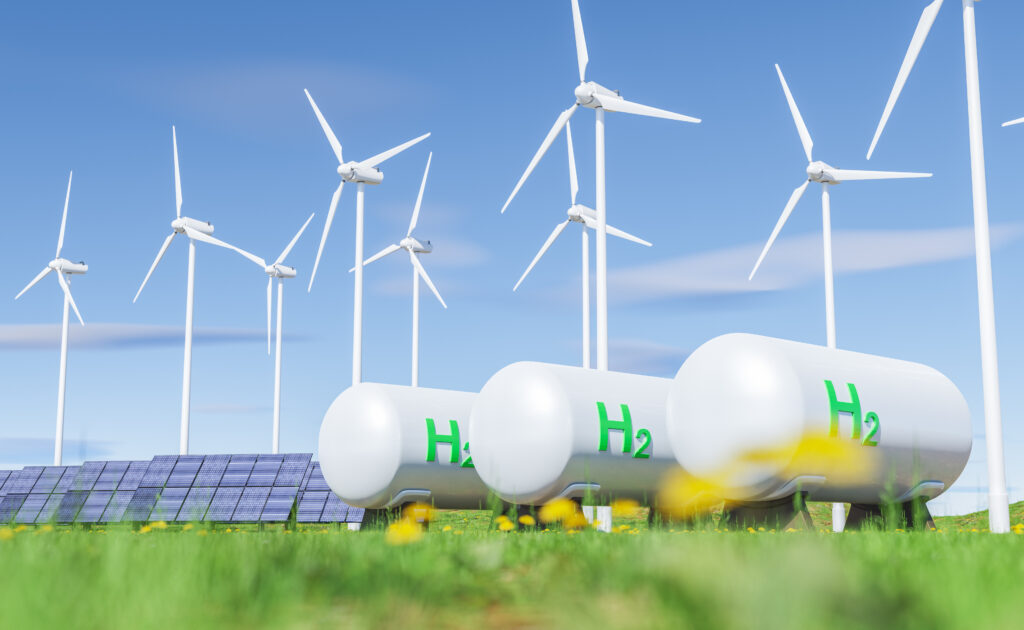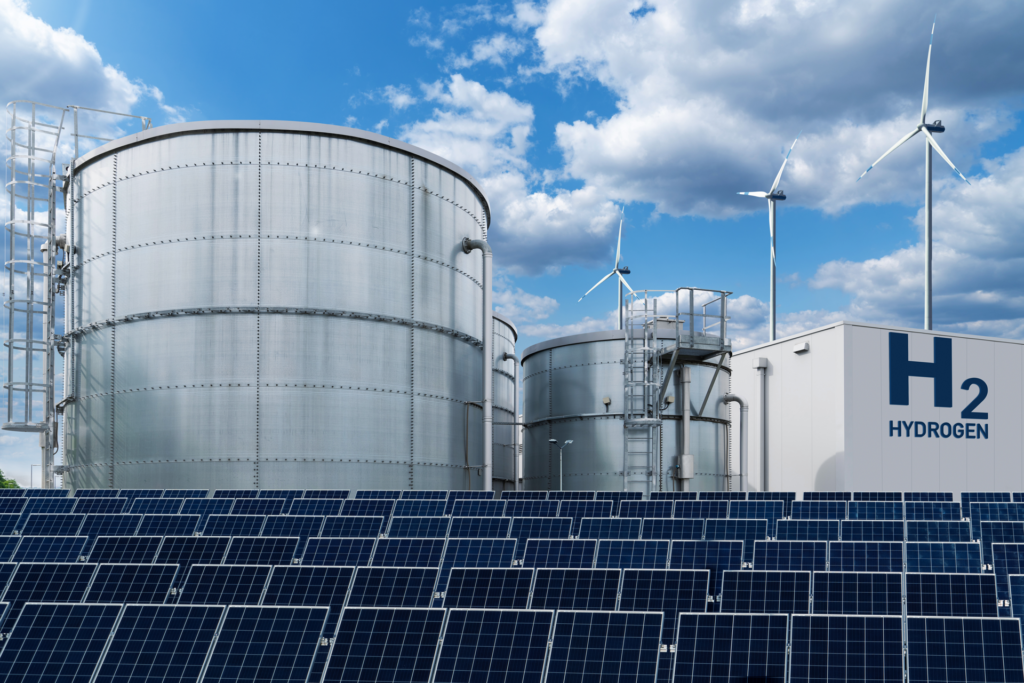Green Hydrogen

Powering Sustainability with Green Hydrogen
The global energy transition is at a pivotal moment, and green hydrogen has emerged as a cornerstone of this revolution. As a clean, renewable, and efficient energy carrier, green hydrogen is transforming how industries operate. At Manufyn, we bring you cutting-edge renewable energy solutions, making it easier to adopt green hydrogen systems that reduce carbon emissions while optimizing energy costs.
Whether you’re looking to integrate renewable energy systems into your industrial processes or partner with one of the leading renewable energy companies, Manufyn is your trusted ally in building a sustainable future.
What Is Green Hydrogen?
Green hydrogen is produced using renewable electricity to power electrolyzers that split water into hydrogen and oxygen. This process ensures zero greenhouse gas emissions, making it a clean alternative to traditional fossil fuels.
How Does Green Hydrogen Work?
- Step 1: Renewable energy from solar, wind, or hydropower generates electricity.
- Step 2: Electricity powers the electrolyzer to separate water molecules into hydrogen and oxygen.
- Step 3: Hydrogen is stored, transported, and utilized for various applications.

Applications of Green Hydrogen Across Industries
Industrial Use
Green hydrogen is a vital component for decarbonizing heavy industries like steel, cement, and chemical production.
Transportation
From hydrogen fuel cell vehicles to large cargo fleets, green hydrogen offers an eco-friendly alternative to fossil fuels.
Energy Storage
It serves as an efficient medium for storing surplus renewable energy, ensuring reliability in energy grids.
Power Generation
Green hydrogen-powered turbines can replace natural gas for electricity generation, minimizing emissions.
Benefits of Green Hydrogen
-
Carbon Neutral
Green hydrogen contributes to a net-zero future, aligning with global climate goals.
-
Versatility
It is a multipurpose energy carrier, suitable for power generation, storage, and fuel.
-
Scalable Solutions
From small-scale applications to industrial-grade requirements, green hydrogen is adaptable.
-
Energy Independence
By using renewable energy sources, green hydrogen reduces dependence on fossil fuels and energy imports.

Manufyn’s Role in Green Hydrogen Adoption
At Manufyn, we aim to be a leader among renewable energy companies, providing innovative solutions to facilitate the adoption of green hydrogen. Our services include:
Project Feasibility Studies
We conduct thorough analyses to determine the technical and financial feasibility of green hydrogen projects.
Customized System Design
Our experts design renewable energy systems tailored to your operational requirements.
Technology Integration
From electrolyzers to storage systems, we integrate state-of-the-art technology into your energy framework.
End-to-End Project Execution
Manufyn oversees the entire lifecycle of your green hydrogen project, ensuring efficiency at every step.
Maintenance and Support
We provide ongoing support to ensure the reliability and optimal performance of your green hydrogen systems.
Key Industries Benefiting from Green Hydrogen
| Feature | Applications |
|---|---|
| Manufacturing | Powering machinery, decarbonizing production processes. |
| Automotive | Fueling hydrogen vehicles for zero-emission transportation. |
| Energy Utilities | Storing surplus renewable energy for grid stability. |
| Aerospace | Lightweight and efficient fuel for next-gen aircraft. |
| Construction | Sustainable energy solutions for heavy equipment and on-site power. |
Steps to Implement a Green Hydrogen System
At Manufyn, we aim to be a leader among renewable energy companies, providing innovative solutions to facilitate the adoption of green hydrogen. Our services include:
Feasibility Study
Assess the energy demands, renewable energy potential, and project viability.
System Design
Develop a customized design integrating electrolyzers, storage units, and distribution networks.
Renewable Energy Integration
Ensure seamless connectivity between renewable energy sources and hydrogen systems.
Execution and Deployment
Install and commission the system, adhering to global standards and safety protocols.
Monitoring and Maintenance
Optimize performance with advanced monitoring tools and periodic maintenance.
Join the green revolution today. Contact Manufyn to explore how green hydrogen can transform your operations.
Why Choose Manufyn for Green Hydrogen Projects?
Expertise in Renewable Energy
Our team of specialists ensures seamless integration of green hydrogen into your operations.
Commitment to Sustainability
We align with global goals to combat climate change and reduce carbon emissions.
Advanced Technology
Manufyn uses cutting-edge tools and processes to deliver high-quality renewable energy systems.
Cost-Effective Solutions
Our tailored services optimize energy costs, offering maximum ROI for your investment.
FAQs
Green hydrogen is produced using renewable energy sources like solar, wind, and hydropower, ensuring zero emissions.
Unlike traditional hydrogen produced from fossil fuels, green hydrogen is generated using renewable energy systems, making it eco-friendly.
Yes, green hydrogen is instrumental in decarbonizing energy-intensive industries like steel, cement, and chemicals.
Manufyn provides end-to-end solutions, from feasibility studies to system maintenance, ensuring efficient and sustainable green hydrogen projects.
Absolutely. Green hydrogen systems can be scaled to meet the energy demands of both small and large-scale industries.
Costs vary based on project size and complexity. Contact Manufyn for a detailed consultation and cost analysis.
Start Your Green Hydrogen Journey with Manufyn
Empower your business with sustainable energy solutions. From reducing emissions to achieving energy independence, green hydrogen is the future.
Get in touch with Manufyn today and take the first step towards a greener tomorrow!


